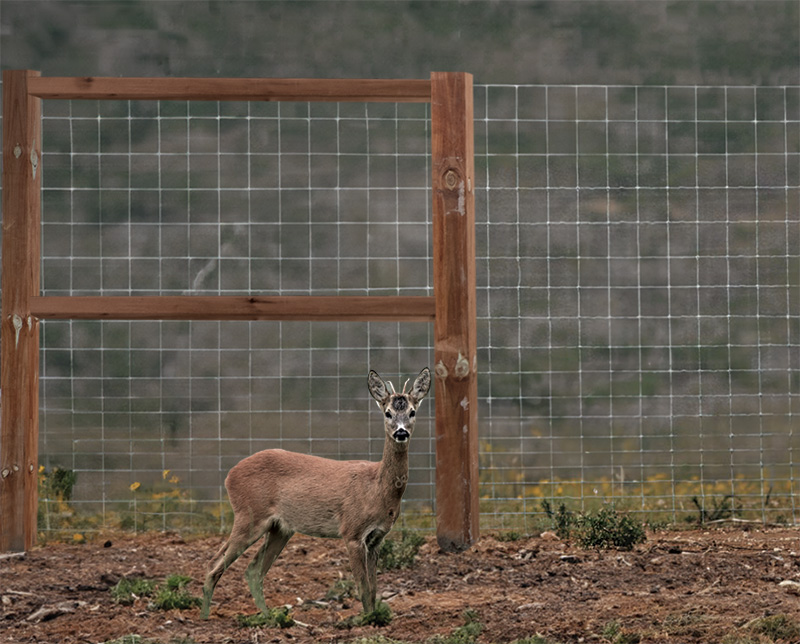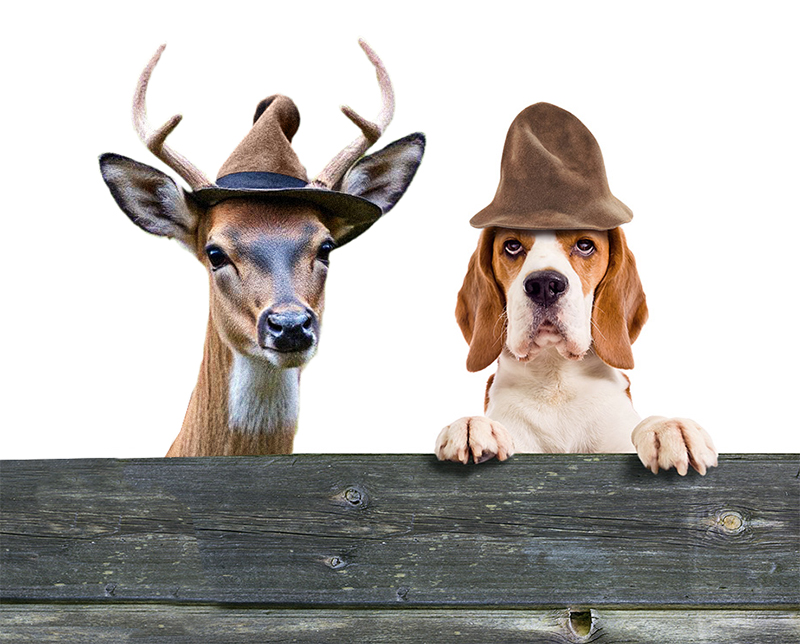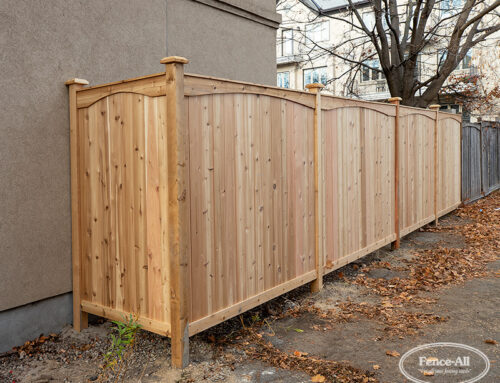If you’ve ever had a run-in with deer in your garden or watched a dog make a beeline for a backyard fence, you may wonder—do these animals see and respond to fences the same way? At first glance, a barrier is a barrier. But the reality is much more complex. Let’s explore how deer and dogs perceive fences, and what that means for your property.
Instinct vs. Territory
Dogs are territorial animals. When they see a fence, they tend to treat it as a boundary they must defend—or breach, depending on the dog. They recognize the fence as a limit to their movement and often test it for weak spots.
Deer, on the other hand, are prey animals. They don’t “understand” fences in the same territorial way. They see them more as obstacles to avoid, go around—or leap over. A deer won’t pace along a fence looking for a hole the way a dog might. It will assess whether it can jump it or simply walk away.
Can They See the Fence?
Dogs generally have good motion detection but poor depth perception and limited color vision. Most dogs can easily see standard fences, whether they’re wood, chain link, or vinyl. For them, a fence is both a visual and tactile boundary.
Deer have wide-angle vision and are highly sensitive to movement—but their depth perception isn’t great either. If a fence blends into the surroundings or is made of transparent material (like glass or mesh), a deer might not notice it until it’s too late. This explains why some deer crash into invisible pool enclosures or low-clearance glass barriers.
Jumping Ability
Dogs can jump, sure—but few dogs can easily clear a 6-foot fence.
Deer? Different story. White-tailed deer, for example, can leap up to 8 feet high from a standing position. That means even tall fences may be ineffective unless they’re built with deer-specific deterrence in mind (like slanted tops or double fencing). Dogs are more likely to try digging or chewing their way through than clearing a fence vertically.
What Actually Works?
If you’re trying to keep either animal in—or out—your fence strategy will differ:
- For dogs, a solid 5–6 foot fence with a secure bottom (to prevent digging) and no climbable supports works well.
- For deer, you’ll need height and visual presence. A fence that’s at least 7–8 feet tall, or two shorter fences placed a few feet apart, will make most deer think twice.
- Visual cues help both animals: adding flags, slats, or contrast makes fences easier to recognize and avoid.

Height is the biggest factor when trying to prevent a deer crossing.
So, Do They Perceive Fences the Same Way?
Not at all.
Dogs often see fences as territorial boundaries—things to patrol, guard, or test.
Deer see fences as temporary obstacles—something to assess and either avoid or leap over.
Understanding the mindset of the animal you’re dealing with is the first step toward an effective fencing solution. If you’re in a deer-prone area, what works for your dog might not work for the wildlife wandering in from the woods.
Need Help Choosing the Right Fence?
Whether you’re keeping pets safe or deterring local wildlife, we can help you find the right fence for your needs and budget. Contact us today at(613) 736-1122 or explore our range of residential fencing options.






